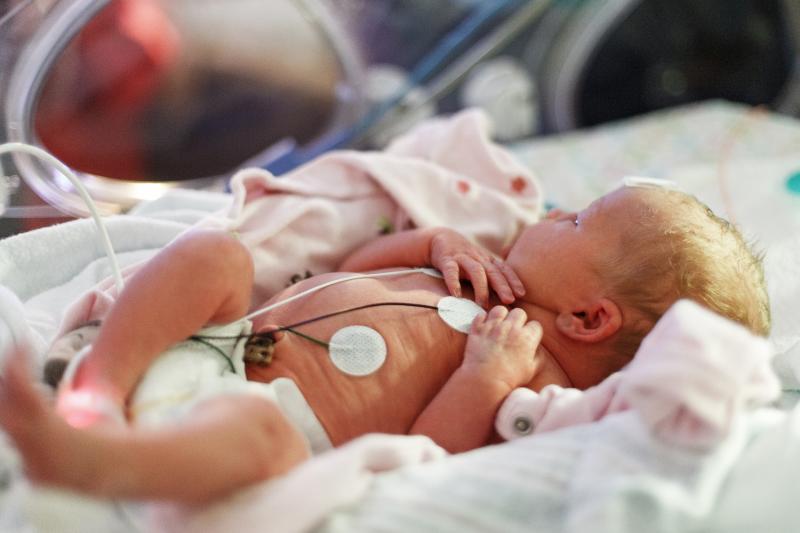
Both auscultation with a stethoscope and umbilical cord palpitation are accurate methods of estimating heart rate (HR) in newborns at risk for resuscitation, but the former may have a slight edge, a recent study has shown.
The researchers randomly assigned 60 at-risk newborns to undergo HR estimation by auscultation (n=30; mean gestational age, 38 weeks; 19 males) or umbilical cord palpitation (n=30; mean gestational age, 37 weeks; 17 males). Assessments were performed during the first 60, 90, and 120 seconds, and 5 minutes, of life. The agreement of HR as measured by the two methods was designated as the primary outcome.
Bland-Altman plots showed that HR measurements between auscultation and electrocardiography (ECG) were different by an average of –13 bpm at 60 seconds of life. This improved to –4, –6, and –10 bpm at 90, 120, and 300 seconds of life, respectively.
In comparison, the 60-second HR measurements between umbilical cord palpitation and ECG had a –20-bpm discrepancy. By 90, 120, and 300 seconds, these differences changed to –25, –23, and –31 bpm, respectively.
Comparing both trial methods, the absolute HR differences over time were smaller with auscultation than with palpitation, resulting in a mean difference of –4 bpm per minute after birth. The discrepancy was statistically significant (p=0.007).
Despite the comparative advantage of auscultation over palpitation, “both may provide adequate clinical information to healthcare providers in terms of HR ranges,” said the researchers. “Our study included only a small number of measurements with HR <100 bpm; thus, the clinical relevance of the finding remains to be established.”